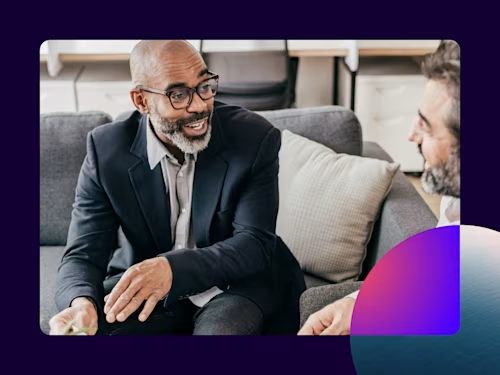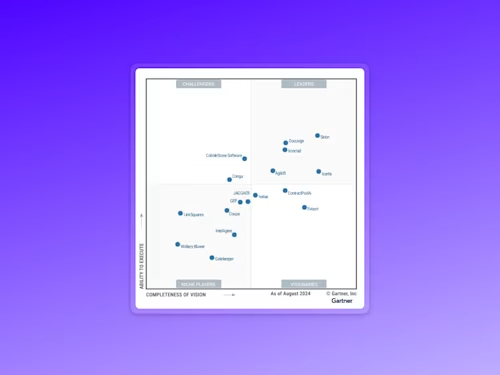
How Technology Improves the Healthcare Experience – For Patients and Providers
Modern healthcare organizations reap benefits from digitized end-to-end document management. Efficient administration and better patient experiences are two.


Healthcare is a document-dependent industry. Every organization’s hands are filled with critical documents like patient intake forms, compliance documents, and more. Manually sending, signing, and managing all of these documents is a major challenge—and costs the industry billions of dollars and thousands of hours every year.
Paper-based agreement processes were a major source of inefficiency pre-pandemic, but COVID-19 forced providers to tackle outdated document management strategies head on. To continue serving patients remotely, many providers adopted tech tools, like electronic signatures, to manage workflows from afar.
As in-person healthcare returns, organizations are realizing that the benefits of contactless digital agreement solutions—like greater efficiency, reduced costs and an improved patient experience—will remain advantageous even after COVID-19 is behind us. There is no reverting back to slow-moving, paper-based solutions; the future of healthcare requires continuous innovation and technological transformation.
The electronic signature—and beyond
When most people think of digital agreements, they think of the electronic signature. E-signature technology is widely used in healthcare environments as a tool to provide a secure, simple, contactless way to manage a critical stage in the agreement process—and adoption is steadily on the rise.
In a recent webinar hosted by Becker’s Healthcare, Manish Goomar, Director of Systems Solutions at MIMIT Health, and Michelle Stansbury, VP of Innovation and IT Corporate Business Systems at Houston Methodist, discussed how advanced document management technology is helping their healthcare organizations prepare for the digital future of healthcare.
With support from Docusign, MIMIT Health, one of the fastest growing multi-speciality physician groups in the US, was able to bring a telehealth solution online in less than 48 hours. Houston Methodist, a leading provider of medical services in the Greater Houston Area, used Docusign to support a contactless healthcare experience that was secure, reliable and scalable—even as the effects of the pandemic spread.
“When COVID-19 hit, the first place we looked was our signature process,” says Stansbury. “Of course, for safety reasons, patients didn’t want to sign things manually or pick up a signature pad. So we asked ourselves: How can we take this cumbersome, paper-based system and bring it online?” The practical impact of COVID-19—like an increase in patient volumes and a need for contactless healthcare solutions—forced Houston Methodist to shift away from their manual agreement process.
For MIMIT Health, the story is similar. Goomar says, “Being able to get documents signed before the patient comes in made a pretty big business impact on our organization because it allowed us to speed up the time and labor efficiency for team members involved in everything from patient engagement to revenue cycle management.”
Stepping away from manual document management towards flexible, digital solutions has been a common trend among healthcare providers during COVID-19. Many organizations saw as much as a 100% increase in the number of documents that required an electronic signature.
It didn’t end there. E-signature was the first step, but organizations like MIMIT Health and Houston Methodist quickly realized that digitizing manual processes could benefit their practices in even greater ways. “We soon understood that this was a way to increase the overall efficiency of our organization, by electronically managing the sending, signing and filing of our documents in a way that seamlessly cooperates with our EHR and other Systems of Record,” says Stansbury.
The benefits of end-to-end document management
For Houston Methodist, it became clear that every part of the agreement process—from document generation to storage and retrieval, could benefit from process improvement. With an escalating need for flexible care delivery models, new entrants into the industry and rising administrative costs, many providers digitized their documentation processes during 2020 and 2021, using new technology to:
1. Improve the patient experience
In addition to replacing time-consuming, manual workflows, a touchless patient experience that leverages digital documents and e-signatures, gives providers a way to keep pace with patient expectations. In today’s digital marketplace, consumers expect simple, speedy service in every industry—healthcare included. And that’s a trend that will continue to gain momentum in the coming years. “The demographic is starting to change,” says Stansbury. “When you think about Gen Z and future generations, they’re going to be used to the convenience that these digital solutions provide. It’s an investment in the future.”
2. Provide business continuity
In 2019, no one could have predicted that just a couple of months later the world would be forced to conduct business almost exclusively online. Healthcare providers that already possessed the digital infrastructure to reach patients in a remote environment didn’t miss a beat. But those that weren’t yet on the path toward digital transformation had a lot of catching up to do. “Having an agile, adaptable and flexible technology stack that connects with your operations is really important when it comes to meeting unexpected challenges,” explains MIMIT’s Goomar, who—with support from Docusign—was able to bring a full-service telehealth solution online in less than 48 hours.
3. Promote scalable growth
Bringing disparate systems together under one roof makes it easy to iterate processes across departments—which also makes it easy to scale your organization. “This technology enables us to be innovative, agile, proactive and dynamic—all while keeping our focus on patient needs,” shares Stansbury.
“We went from [being able to provide direct care to] one practice—doing services in one nursing home—to 55 in under a year with the technology enablement that we have [digitizing the credentialing process],” adds Manish. “For example, one thing I tell people is, if you’re a personal trainer at a local gym, that’s a limited scale. But if you’re a personal trainer and you can offer classes online with Zoom, that becomes a globally scalable business.”
4. Boost productivity for healthcare employees and clinicians
More than anything, implementing a touchless patient experience that leverages digital documents and eSignatures helps healthcare providers spend less time on processes and more time doing what matters: helping patients. “Clinicians just want to take care of patients, and we have to make sure that we keep innovating so it’s very seamless and easy for them,” says Manish. “All the information they need should be organized in one system, so that it’s really accessible—and so it’s easy for the patient and provider to communicate with each other.”
5. Create greater equity in healthcare
Healthcare inequality is an issue that affects communities around the globe. There is no single solution that will make healthcare more accessible to patients in underserved or disenfranchised segments of the population, but technology can help the industry take steps in the right direction. “I do think technology can help,” says Manish Goomar. “Data is the new oil—and we have access to more organized data than ever before. And looking at the data and getting that analysis of where communities are that lack access to healthcare is a great first step.”
Every year, the healthcare environment is introduced to new regulatory constraints, treatment options and payment models—which means the complexity of the industry’s agreements is continually rising. Relying on manual or paper-based systems of agreements will only become more unmanageable as time goes on.
Related posts
 Insights for LeadersUpdated Feb 11, 2025
Insights for LeadersUpdated Feb 11, 2025 Insights for LeadersUpdated Feb 11, 2025
Insights for LeadersUpdated Feb 11, 2025How to Electronically Sign and Send a PDF

Liveness Detection for ID Verification

How to Electronically Sign and Send a PDF
Discover what's new with Docusign IAM or start with eSignature for free


